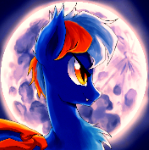-
Similar Content
-
- 33 replies
- 1,538 views
-
- 1 reply
- 4,217 views
-
Final Fantasy Friendship Tutorial Battle Demonstration
By Happy Heart,
- atoas custom battle system
- final fantasy
- (and 2 more)
- 0 replies
- 235 views
-
- 12 replies
- 602 views
-
- 9 replies
- 8,545 views
-
-
Recently Browsing 0 members
- No registered users viewing this page.






.thumb.png.83e037ba7e453fda3377d3d6caa2743d.png)
Recommended Posts
Create an account or sign in to comment
You need to be a member in order to leave a comment
Create an account
Sign up for a new account in our community. It's easy!
Join the herd!Sign in
Already have an account? Sign in here.
Sign In Now